V M O Muscle (Vastus Medialis Obliquus)
V M O Muscle (Vastus Medialis Obliquus) Anatomy
The Vastus Medialis Obliquus (VMO) is a muscle located in the quadriceps group of muscles in the thigh. The quadriceps femoris is a group of four muscles on the front of the thigh, and the VMO is one of these muscles. The quadriceps as a whole are responsible for extending the knee, and they play a crucial role in activities such as walking, running, and jumping.
The VMO is a teardrop-shaped muscle located on the inner side of the thigh, just above the knee. It is regarded as a component of the quadriceps group’s most medial (interior) muscle, the vastus medialis. The VMO will often come up while discussing knee health, especially when it comes to the patella (kneecap).
Anatomical documents suggest that the muscle fiber pennation angles of the vastus medialis oblique (VMO) and vastus medialis (VM) vary, leading to functional differences between them. Whereas VM travels more longitudinally and contributes more to knee extension, VMO runs obliquely and aids in the medial translation of the patella.
In rehabilitation and injury prevention programs, strengthening the VMO is frequently emphasized, particularly for illnesses such as patellofemoral pain syndrome and patellar tracking abnormalities. Leg extensions, terminal knee extensions, and other isolation exercises targeting the inner section of the quadriceps are examples of exercises that target the VMO.
It is interesting that the VMO functions in concert with the other quadriceps muscles, and that the stability and functionality of the knee depend on the total strength of the quadriceps.
Origin
The adductor magnus tendon, the medial lip of the linea aspera, and the medial supracondylar line are the origins of VMO.
Insertion
The medial edge of the patella and the knee joint capsule are where VMO inserts. Additionally, there is a little section where it joins the patella tendon directly.
Nerve Supply
A branch that originates in L2, 3, and 4 of the femoral nerve’s posterior division
Blood Supply
Femoral artery
Function
VMO helps in the final stage (last 30 degrees) of knee extension as well as medial translation of the patella.
Clinical Importance
Maintaining proper kneecap tracking requires the vastus medialis obliquie muscle (VMO). In other words, it keeps the patella stable when it moves.
The VMO’s fibers are active throughout the whole range of motion in those who are pain-free normal individuals.
The muscle fibers contract irregularly in people suffering from chondromalacia patella or patellofemoral knee pain. They thus become tired easily.
Patella tracking & Q angle
The VMO’s unique function is to regulate the patella’s tracking while the knee is both bent and straight and to stabilize the patella inside the patella groove.
Mal-tracking of the patella results from malfunctions and vulnerabilities in the VMO, which in turn injure adjacent tissues and produce severe pain.
Examination of VMO muscle
Make sure your VMO is contracting correctly first. VMO dysfunction is frequently the source of chronic conditions like patellofemoral knee pain.
Sit with your legs extended in front of you and a rolled-up towel beneath the damaged knee to assess the VMO contraction.
Contract the muscle by placing your fingers on the VMO area on the inside of the thigh. To get the foot off the sofa, the knee should press into the towel and the leg should straighten.
The muscles beneath your fingertips should be strongly contracted.
In the event that the muscle does not contract, exercise again while applying little pressure to the muscle and focus on contracting the muscle fibers beneath your fingertips.
Should the muscle contract, carry on with your strengthening routine.
Patellofemoral taping
Tapping your patella can be helpful if it’s not tracking correctly or if you experience pain when attempting to execute VMO exercises.
The patella is taped while support strips are used to draw the tape away from sore spots. You might be able to do strengthening exercises pain-free as a result.
VMO muscle Exercise
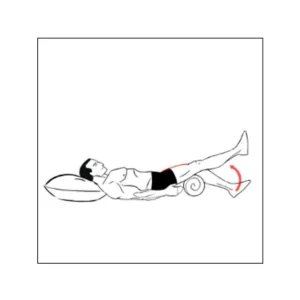
Short-Arc Quad Extensions
Place a small foam roller or a rolled-up towel beneath your knee while lying on your back.
Lift your foot off the ground while maintaining your thigh on the ground to straighten your knee.
Lift your foot, paying attention to activating the VMO.
Knee extension
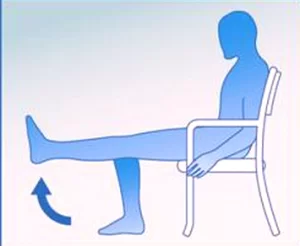
To palpate (feel) the contraction of your VMO muscle, sit on a chair or the floor and place your hand there.
Make sure the VMO muscle on the inside of your thigh contracts as you slowly straighten your knee.
As you completely straighten and then bend your knee again, keep the contraction going throughout the exercise.
The VMO muscle may be subjected to increased stress when you extend your leg.
You should perform these exercises twice a day until you can hold a strong, steady contraction for ten consecutive repetitions.
Heel drops
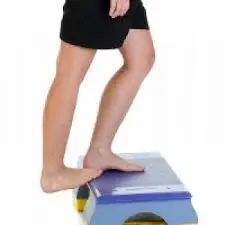
As soon as you can maintain the contraction as described above, begin incorporating it into useful exercises like lunges and heel drops.
To execute a heel drop, one must stand on a step and move their heel forward off the step, bending their knee slightly.
Take only as much as necessary to feel the vastus medialis obliquely constrict. Maintaining a straight knee and controlling the hips is crucial.
When performing this exercise, many therapists would advise taping the patella to guarantee proper tracking.
Knee Extension with Resistance Band
Position yourself on the edge of a table or bench and secure the back of your knee and a fixed spot with a resistance band.
Stretch your knee against the band’s resistance while concentrating on your quadriceps’ inner region.
Don’t lock your knee at the conclusion of the extension; instead, move carefully.
VMO Squeeze

Squeeze a big ball, like a football, that is between your knees.
Since the tendon of the adductor magnus gives rise to the VMO, this also promotes the contraction of the VMO in addition to activating the adductor muscles.
Gradually increase to 5-second holds and 20 repetitions after holding for 3 seconds and repeating 10 times.
Lunge
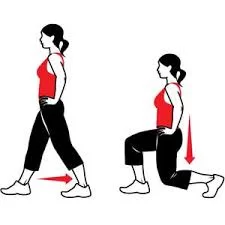
First, place one or two fingers on the front leg’s VMO while in a split stance for the lunge.
To execute a lunge, bend your front leg and lower your rear knee to the ground. Continue to contract your VMO during the lunge.
Perform as many as you can at first while keeping a firm, continuous contraction, and then progressively increase the number until you reach 20.
Step-Ups:
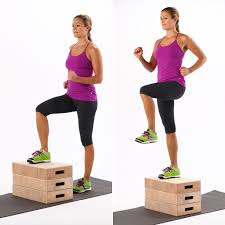
Place yourself on a firm platform and concentrate on utilizing your quadriceps and pushing through your heel.
As you lower yourself back down, maintain control of the action.
Wall Squat
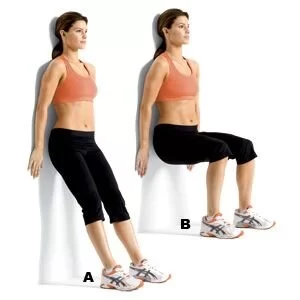
Try moving your back down the wall until your knees create a straight angle and try to do a squat against the wall. Your shins need to stay straight.
FAQ
How do I strengthen my VMO muscle?
Seated Adduction and Isometric VMO:
Take a seat on a platform or chair that allows your feet to hang freely. Your VMO will activate when you place a ball between your thighs and squeeze them together. For ten seconds, hold your contraction. Once more, use your VMO to confirm that it is activated, and as your strength increases, lengthen the contraction.
What happens when the VMO is weak?
As a result, the knee cap may move smoothly up and down when the knee bends and straightens. The other quadriceps muscles move the knee cap to the outside of the groove when the VMO is weak. This may cause excessive wear and tear and rubbing of the joint surfaces in the lateral or outer patellofemoral joint area.
How do I make my VMO bigger?
In order to increase growth in the Vastus Medialis Obliquus (VMO), concentrate on complex workouts that emphasize the inner region of the quadriceps, such as leg presses and squats. Include isolated exercises as well, with an emphasis on activating the VMO, such as step-ups, leg extensions, and terminal knee extensions. For muscles to expand, good form, consistency, and progressive overload are essential.
Does cycling build VMO?
During the downward portion of the pedal stroke, the quadriceps perform at their peak. particularly the vastus medialis oblique (VMO), which aids in shifting into high gear.
Hamstrings: The hamstrings pull the pedal higher and flex the knee.
Do squats target VMO?
Actually, squats are a complex exercise that works the Vastus Medialis Obliquus (VMO) and other lower body muscles. The whole quadriceps muscular group, including the VMO, is worked during squats.
What exercise isolates the VMO?
The following are only a few of the defined exercises that were carried out in an effort to isolate VMO activity:
Exercises for terminal open chain knee extension.
Lower extremity external rotation is used during straight leg raise (SLR).
References
- Walden, M. (2022, June 29). VMO Muscle & Knee Rehabilitation. Sportsinjuryclinic.net. https://www.sportsinjuryclinic.net/rehabilitation-exercises/knee-hamstring-thigh-exercises/vmo-rehab
- Vastus Medialis Oblique. (n.d.). Physiopedia. https://www.physio-pedia.com/Vastus_Medialis_Oblique

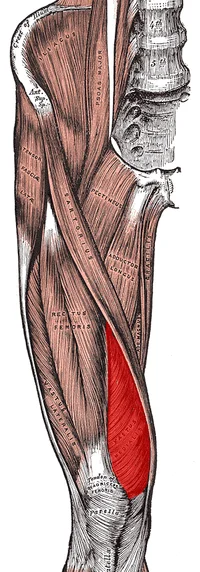
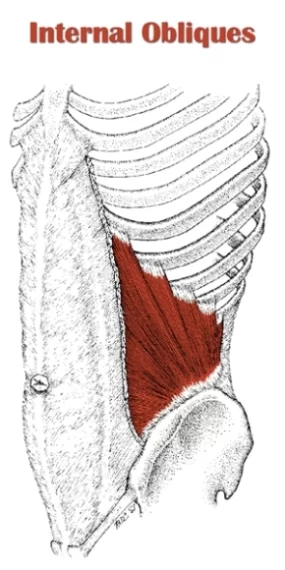

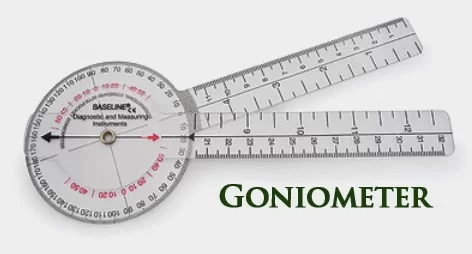
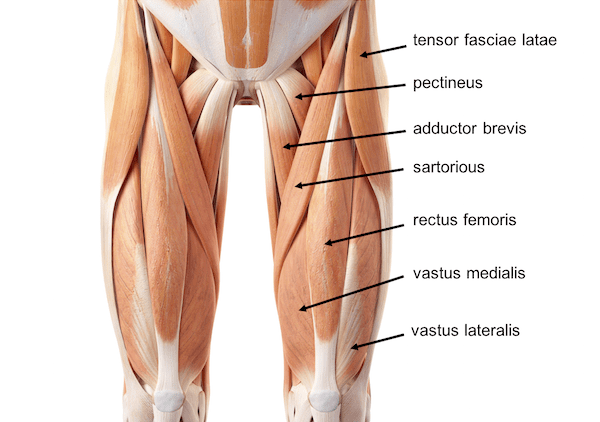

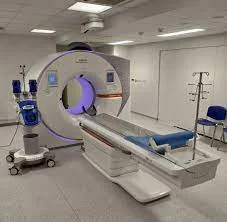
3 Comments